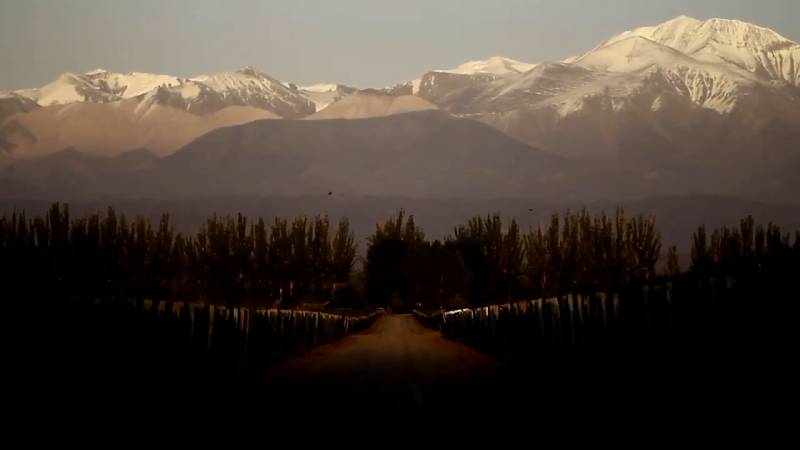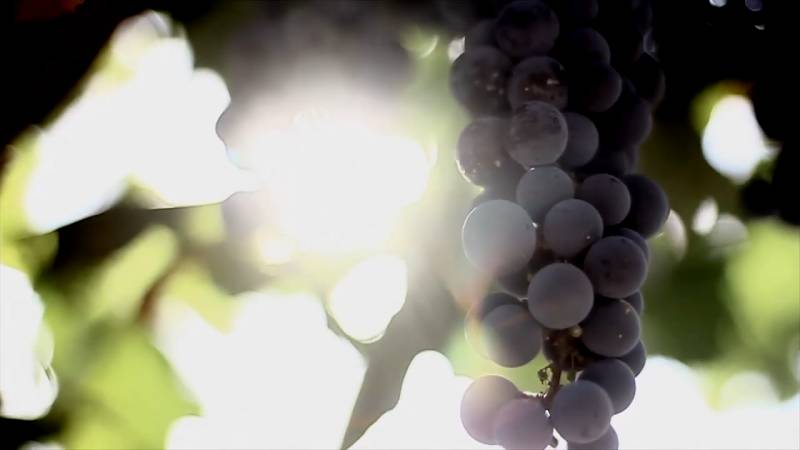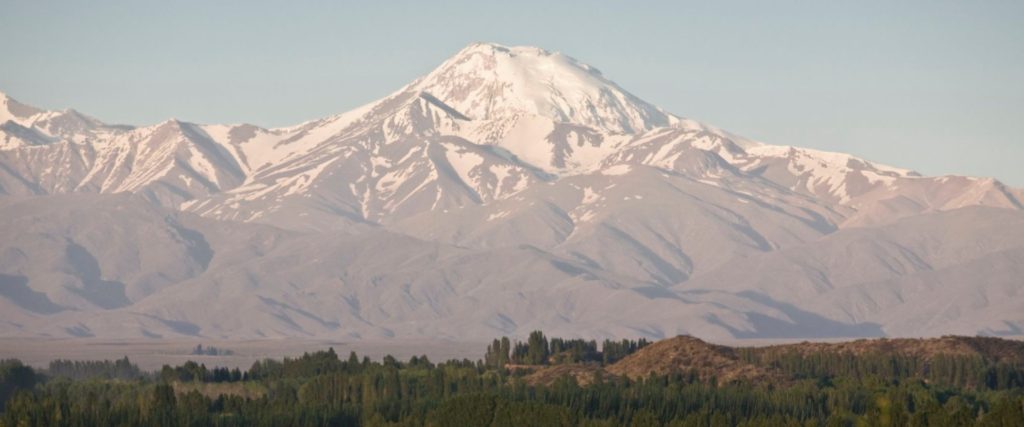Images of Argentine vineyards tend to have the stunning Andes mountain range in the background and it has become a hallmark of the brand. And with good reason: Argentina, the fifth largest wine producer in the world, specializes in the production of high altitude wines because half of the country’s surface area under vine is located in the foothills and slopes of the monumental peaks.
Just to give one example, the 30,000 hectares of vineyards in the Uco Valley are all located above 1000 masl, with some reaching between 1600 and 1900 masl.
Extreme conditions are thus the norm across the region, but they grow even more acute further north: from the Calchaquí Valleys to Humahuaca, Fiambalá to Chilecito right through the heart of Luján de Cuyo, Argentine vineyards regularly appear at the top of global height charts.
“The effect of the Andes mountain range on the climate in the different terroirs of Argentina allows for the production of a range of wines and Malbec really lends itself to that. As we know, the higher the altitude the lower the average temperature and because of the slopes and peaks of mountain valleys you can move from temperate to cool conditions within a 60 mile distance – from Barrancas in Maipú to Tupungato in the Uco Valley – while, in Europe you’d have to go six times that distance for the same effect, from Tuscany to Alsace, for instance,” says Martín Kaiser, Head of Vineyards at Doña Paula.

More and more wineries across the country are producing high altitude wines, reflecting a sense of pride: a unique element seen as a mark of distinction.
So, knowing how the altitude affects the terroir and wines grown at great height might well be of interest to consumers.
High Altitude Wines
In Argentina, at least a dozen scientific papers have been published recently in prestigious journals presenting the results of research into high altitude terroirs. Written by figures such as Ariel Fontana, Fernando Buscema, Martín Kaiser and Roy Urvieta, to mention a few local researchers working at universities and private institutions such as the Catena Institute of Wine, they all seek to explain and classify the effect of altitude on wine. Their findings can be summarized as follows:
Variation in temperature
This is the best-known effect, and why it is possible for vineyards to be planted from the Tropic of Capricorn right down to Patagonia in the south of Argentina. For every 150 metres you climb – a rough figure, the exact numbers change at different latitudes – the average temperature drops by 1°C.
So, a vineyard planted at 1000 masl will have a very different average temperature to one planted at 1600 masl: the higher vineyard will be about 4°C colder. That means that while the former will have a moderately warm climate, the latter will be a much colder wine producing zone. That translates into different styles of high altitude wines: the warm zone will produce fruity reds with structure and moderate freshness while the colder zone will produce more herbal and floral aromas, firmer tannins and sustained acidity.
Greater solar radiation
As one might expect, the further up you are, the more solar radiation you get. While, when one is at sea level, the sunlight is filtered by 100% of the atmosphere, at 2000 masl, that filtration is reduced by 30% with a commensurate increase in radiation. This has a significant effect on the vines.
According to researchers, plants grow far more stressed: while the most obvious result is that the fruit is much more colourful as a defence mechanism, the synthesis of phenolic compounds is affected by changes in the way hormones behave. In the case of red wines, this results in greater structure.

Noelia Torres, the oenologist at Marchiori & Barraud, says: “The higher the altitude, the more the solar radiation stimulates the growth of thicker skins to protect the seeds. In the case of the reds, this means more concentrated color and tannic potential, which depends on how the leaf canopy is handled. Of course, this requires precise work in terms of maceration and extraction but above all it ensures distinctive characters for Malbec depending on where the grapes came from.”
Other distinctive factors are not directly related to altitude as such but the Andes themselves. The most obvious and consistent variable is physical. The higher you go, the steeper the slopes get and the soil is newer while its composition – determined initially by gravity – changes depending on when it comes into contact with rivers.
The combination of soils and altitude in the Andes has set winemakers a puzzle when determining the character of the resulting terroirs that is only just being unravelled. However, one thing is for sure: altitude must be taken into account when considering Argentine mountain wines.



